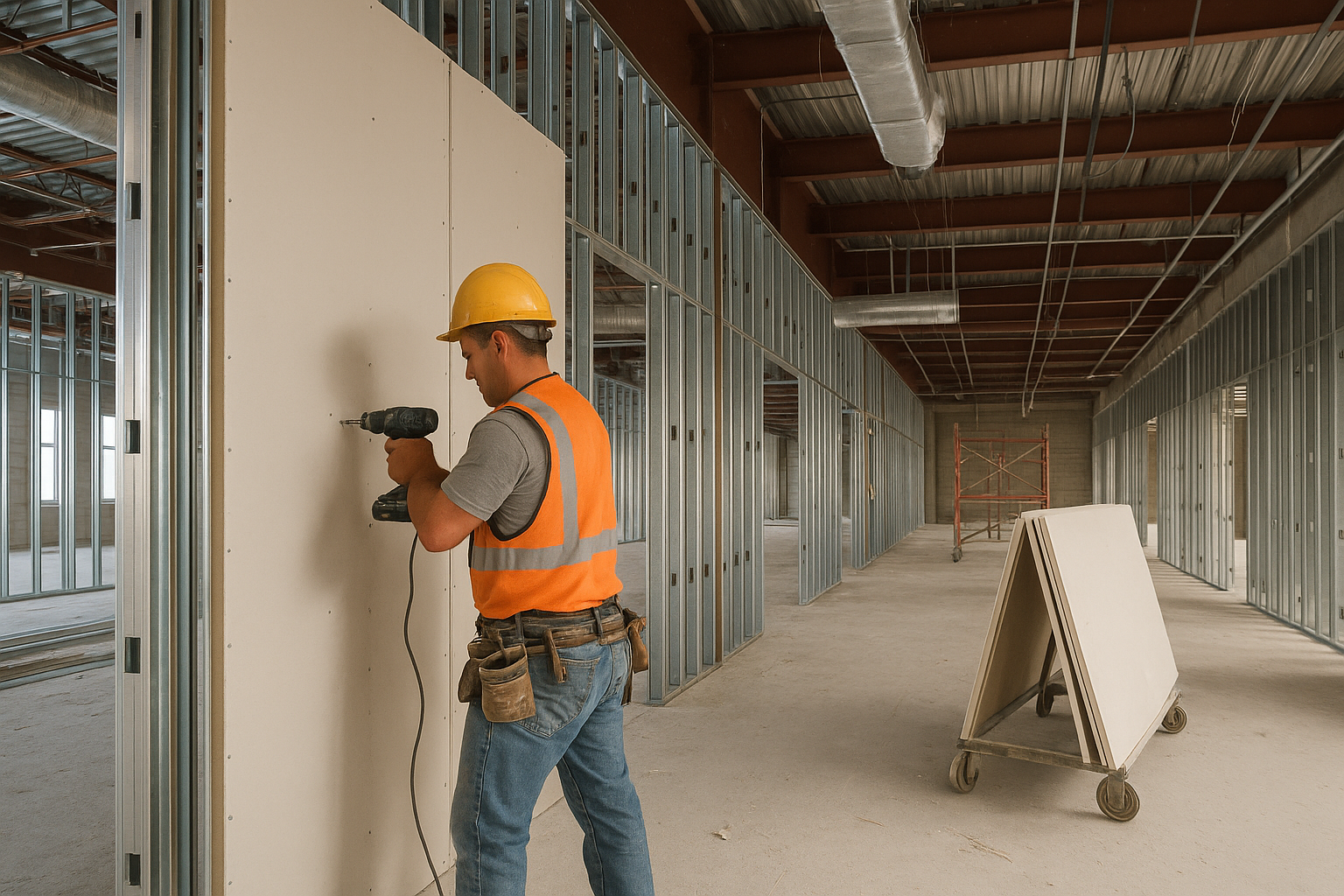
Capturing all layers in drywall estimation is more than just tallying up gypsum board quantities. True cost certainty comes from understanding the full scope—from base framing through final finish—and making sure each layer is documented, quantified, and connected back to actual jobsite execution. For architects, engineers, and general contractors, this means elevating the estimating process from a basic count to a layered cost model that accounts for structure, performance, and finishes in one unified workflow.
In many commercial and institutional projects, a single wall line can contain up to six or more distinct layers:
Omitting or underestimating any of these layers creates cost gaps that compound down the line, especially when change orders hit or phasing conflicts arise during installation.
Each layer in a drywall assembly has unique impacts on labor, materials, logistics, and sequencing. For example, fire-rated assemblies with double Type X boards require more handling and fastening. Acoustical assemblies demand resilient channel installations. Each of these nuances changes the cost picture substantially. A drywall estimating model that collapses these into a generic “per foot” number misses these dynamics entirely.
To capture drywall scope accurately, estimators should use a takeoff strategy that distinguishes and links each layer to its cost component. This includes:
Platforms like Active Estimating enable precise quantification of these layered components. Rather than flattening data into static spreadsheets, users can build smart assemblies that respond to model data, design evolution, and past job performance. This ensures that estimators are not just counting quantities—they’re predicting production workflows.
Using a drywall estimating software solution designed for continuous estimation helps ensure that every material layer is tracked across project revisions. With visual validation, historical labor benchmarking, and version control, estimators gain the ability to model layered drywall assemblies confidently. This also creates alignment between estimating, purchasing, and field crews, reducing margin erosion during execution.
In drywall estimating, surface-level thinking leads to budget surprises. Capturing each layer—framing, board, finish, and beyond—is the key to predictable results. With layered assemblies modeled in tools like Active Estimating, project teams gain the ability to see not just what the wall is, but what it costs to build—accurately, transparently, and at every stage of design maturity.
Schedule a personalized demo to see how Active Estimating can work for your specific needs.
